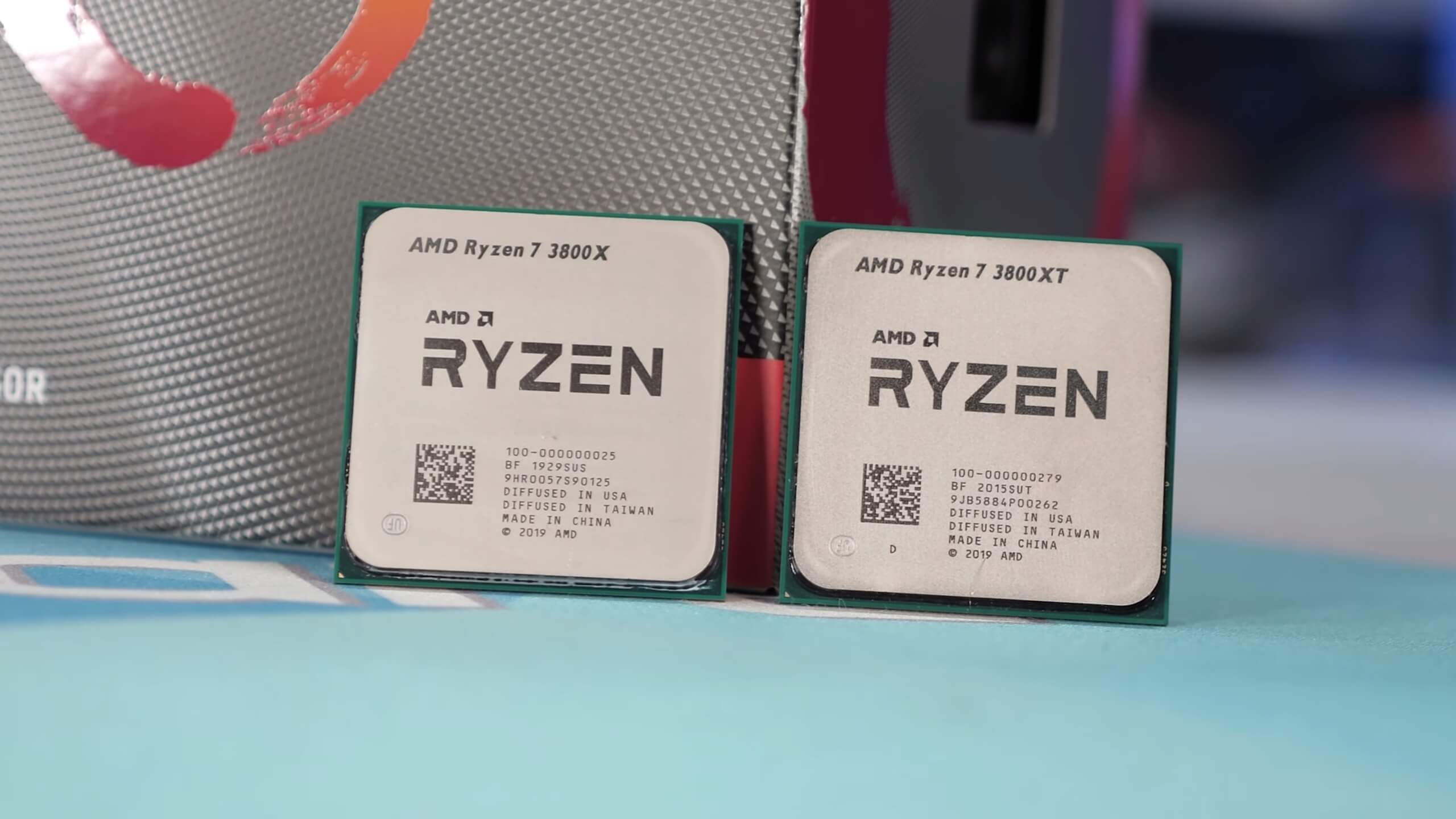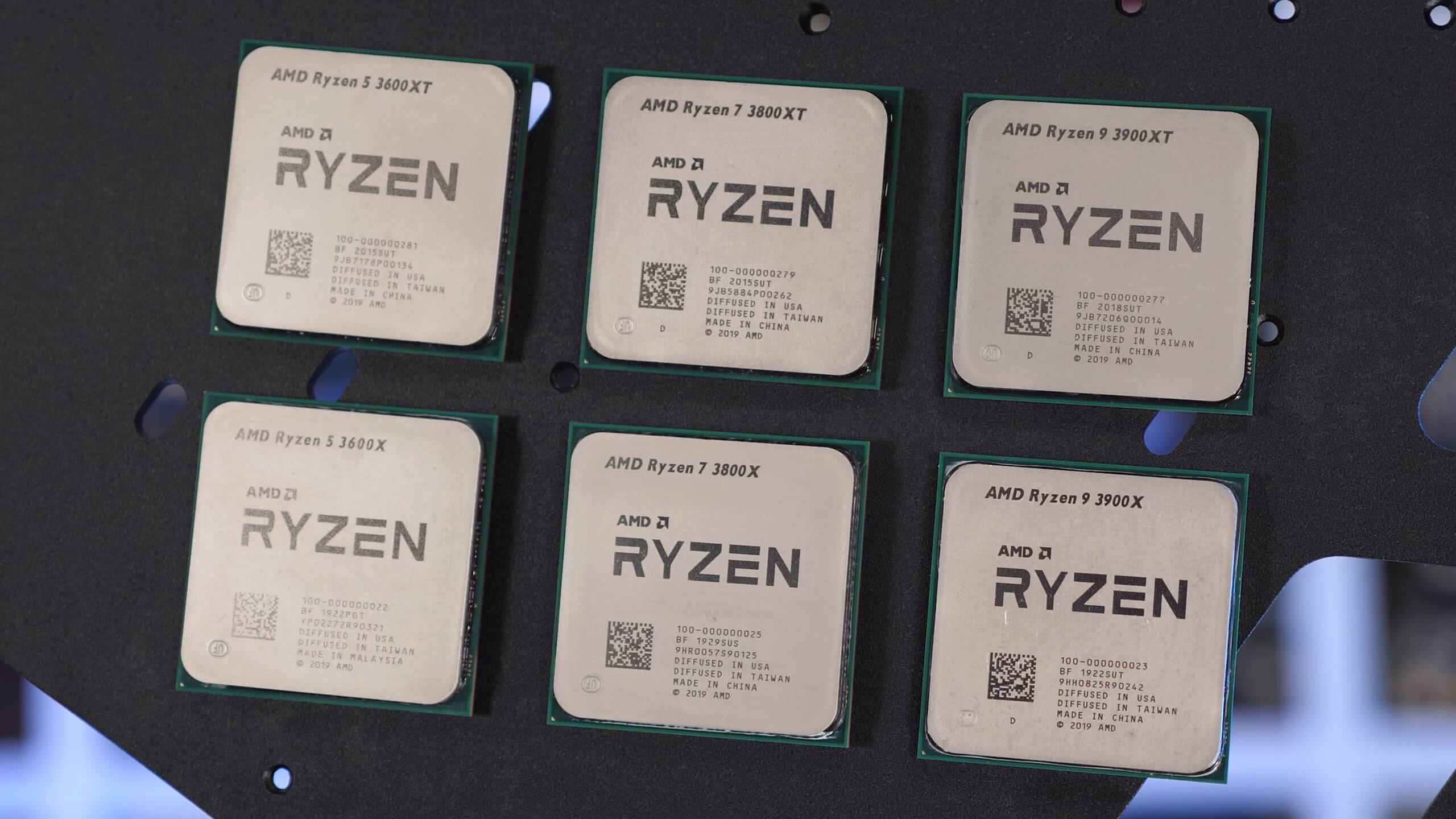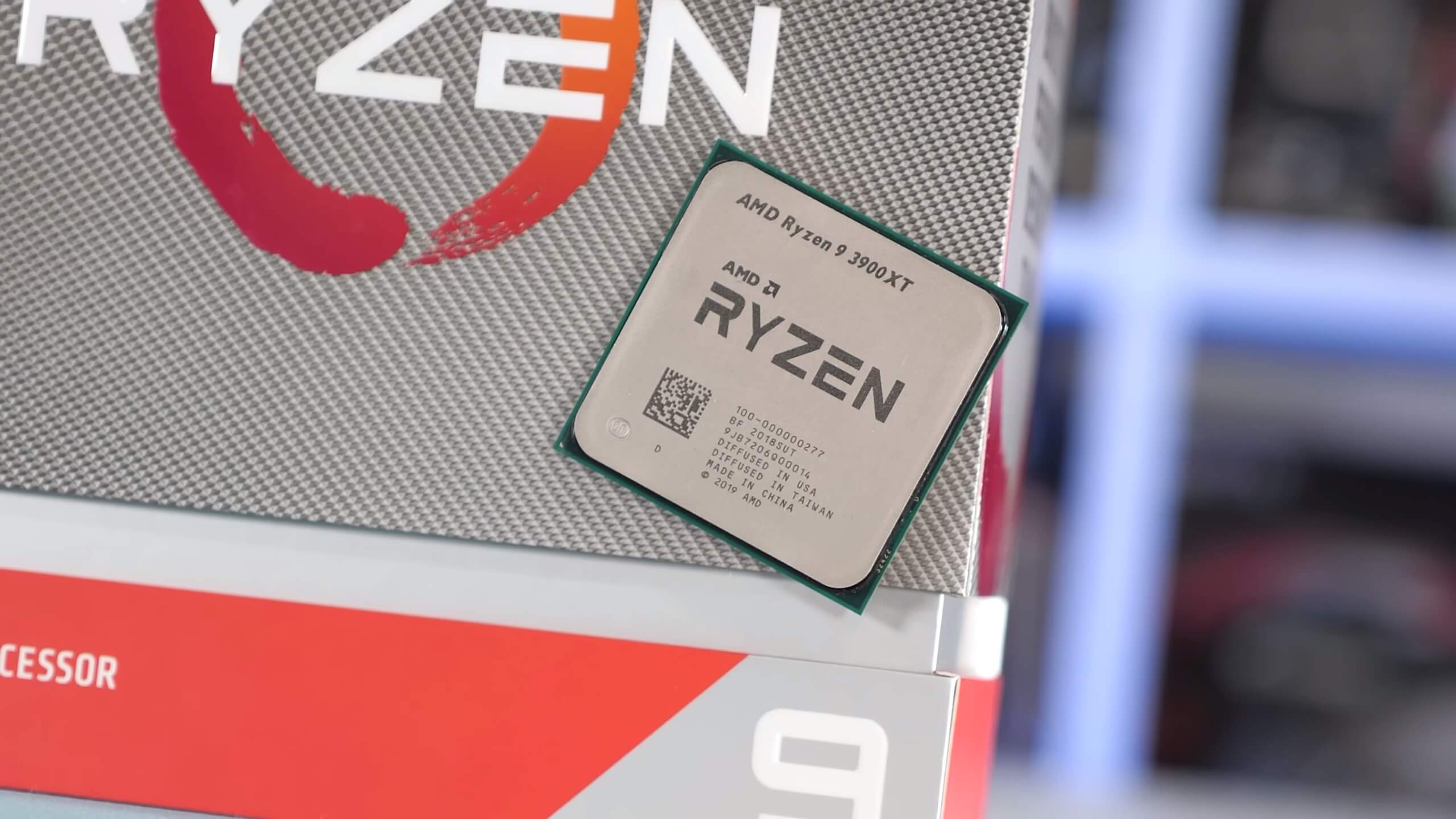After some speculation and anticipation, today we’re taking a look at AMD’s Ryzen 3000XT series. These are technically new processors and you’ll want to know if they’re worth buying. But let’s just stop right there to say, spoiler alert: they’re a big fat nothing-burger that you should avoid. Just buy the models we already had.
Those of you who want more information, feel free to read on. Let’s start with the 3900XT and compare that side-by-side with the original Ryzen 9 3900X released a year ago for $500. It’s a great CPU that sold for around that MSRP throughout 2019. In January 2020 it dropped to $470 and by March it was hitting $420 (see our price tracker here). Pricing will of course vary, but around $420-430 appears to be a common asking price right now, which means the 3900XT is coming in at a 16% price premium, pushing back up to the original $500 asking price.
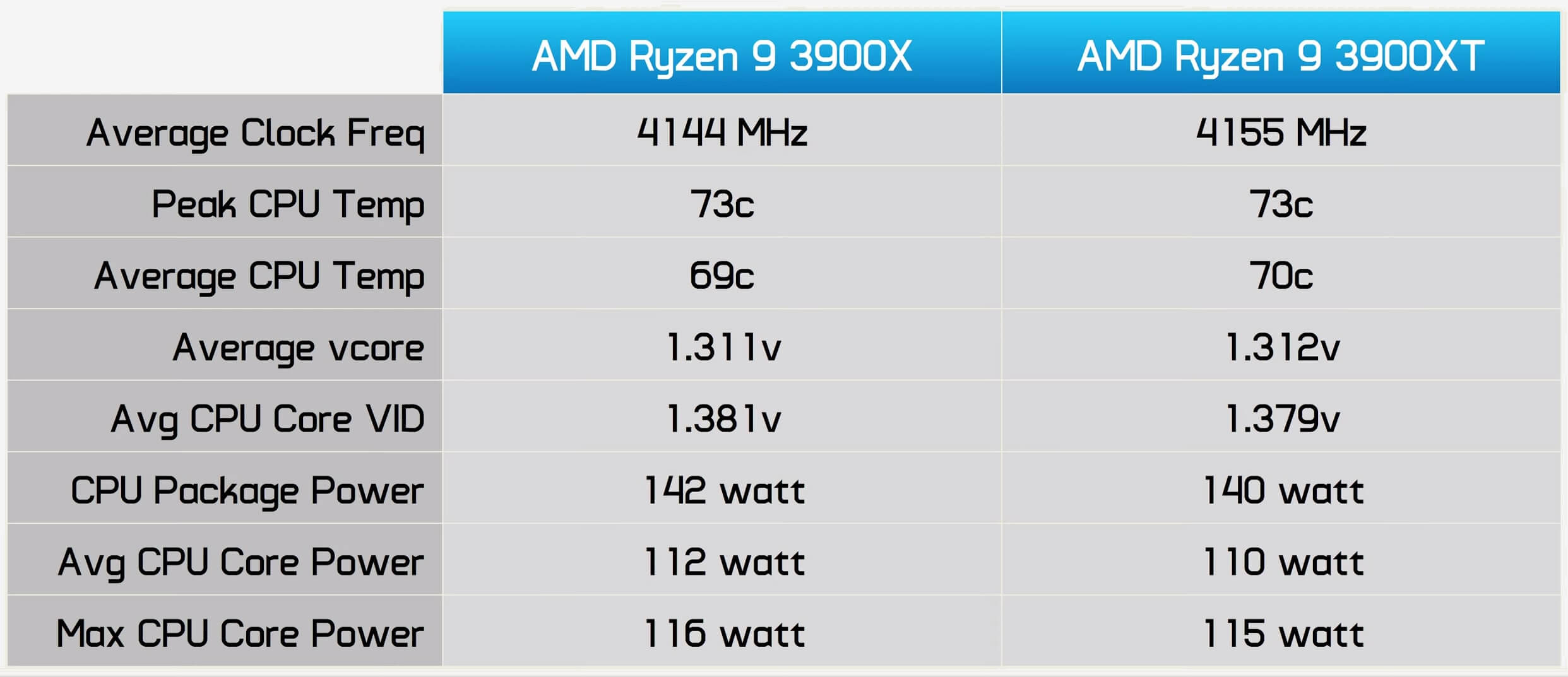
In exchange for that price premium, you get basically nothing. A 2% increase to the max turbo clock and the removal of the Wraith Prism box cooler. Before we get to all the exciting benchmark graphs that we’re 100% not going to cover in detail, here’s how they two compared in the Blender Gooseberry workload.
Yes, the 3900XT clocked an entire 11 MHz higher for a sustained clock frequency of 4155 MHz. That resulted in the same peak and average CPU temperatures and despite rumors of a strict binning process, we’re looking at basically the same voltage and power consumption.
The Ryzen 7 3800XT comes in at the original MSRP of $400, while the 3800X is now down around $340, making the XT version 18% more expensive. The difference? They are taking away the Wraith Prism cooler and in return giving you marginally better silicon that clocks a mere 4% higher.
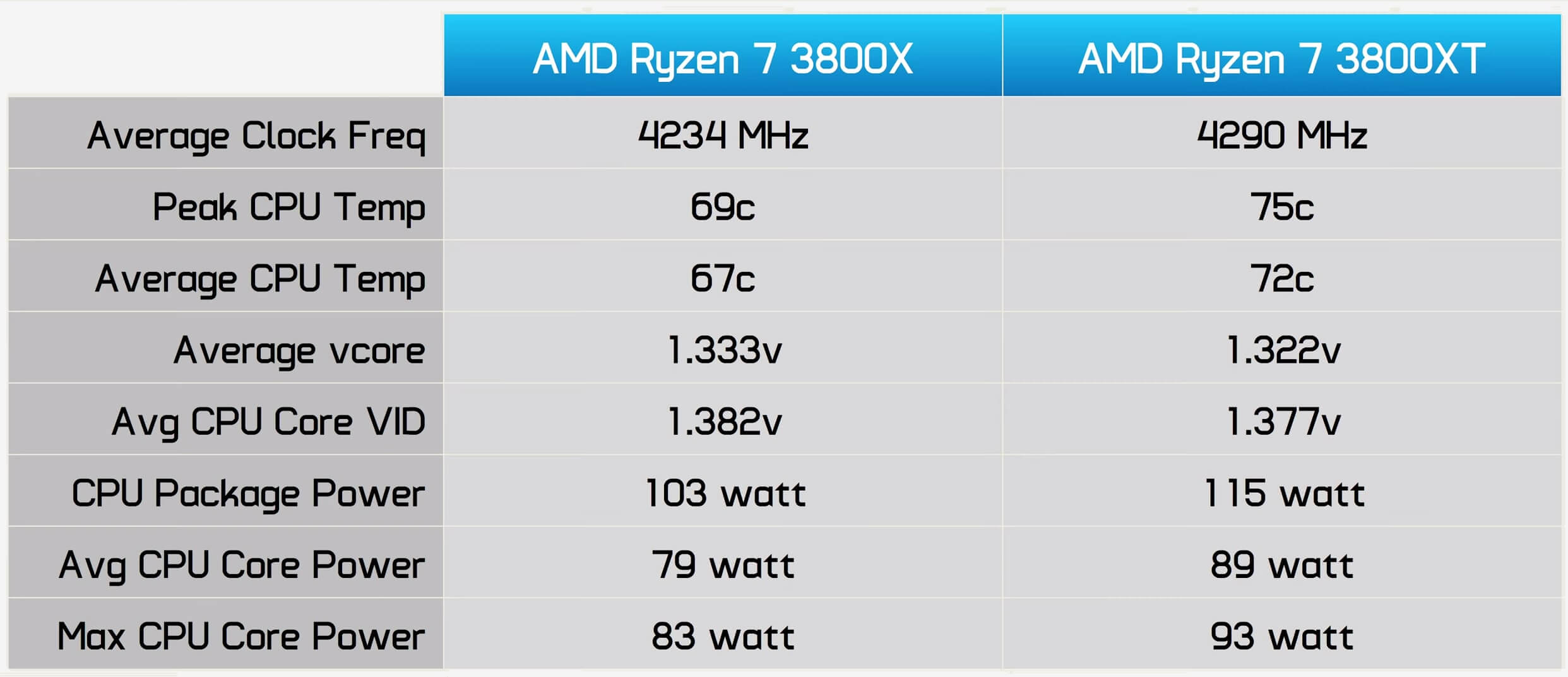
In our Blender test we found that the 3800XT clocked 1% higher on average, resulting in a sweet 56 MHz frequency boost. That performance “improvement” did come at the cost of increased thermals and power consumption though. The 3800XT ran 5 to 6 degrees hotter and consumed around 12% more power.
And finally, here’s a peak at the Ryzen 5 3600XT coming in at the original MSRP of $250, or ~11% more than the current 3600X asking price, but also just over 40% more than the R5 3600, which is the chip to get right now. At least this time AMD keeps the cooler, albeit just a Wraith Spire, plus a 2% increase in operating frequency.
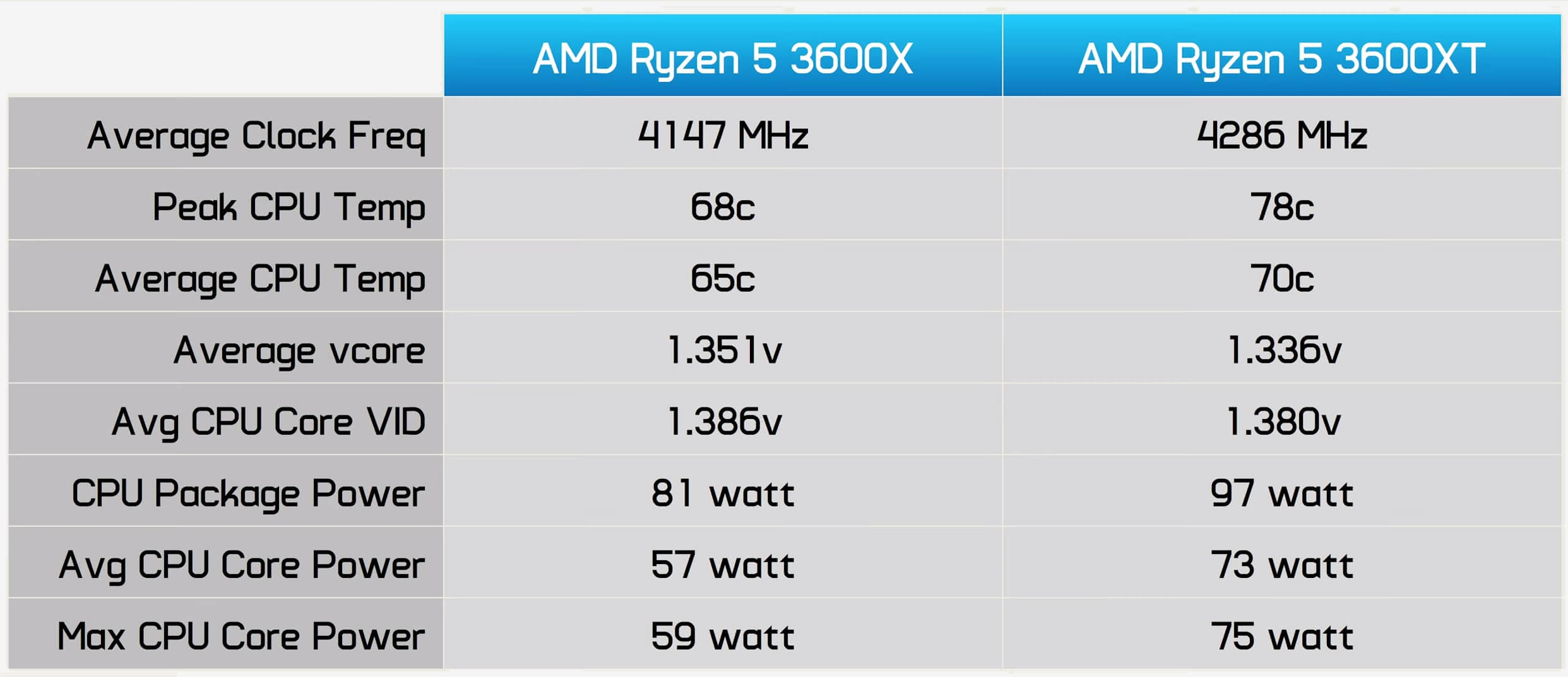
We saw a 3% increase in all-core clock speed in the Blender stress test, which had a huge impact on power consumption and operating temperatures. We’re looking at a 5 to 10 degree temperature increase with a ~20% increase in power consumption. So you’re buying an overclocked 3600X with slightly better silicon, that’s a few percent faster.
We’ve tested the CPUs and you can check out all the graphs below, but we’re simply going to breeze through it as it’s a non-event. For testing all CPUs we paired them with four 8GB DDR4-3200 CL14 modules for a total 32GB capacity and used the Corsair Hydro H150i Pro 360mm AIO liquid cooler.
Benchmarks
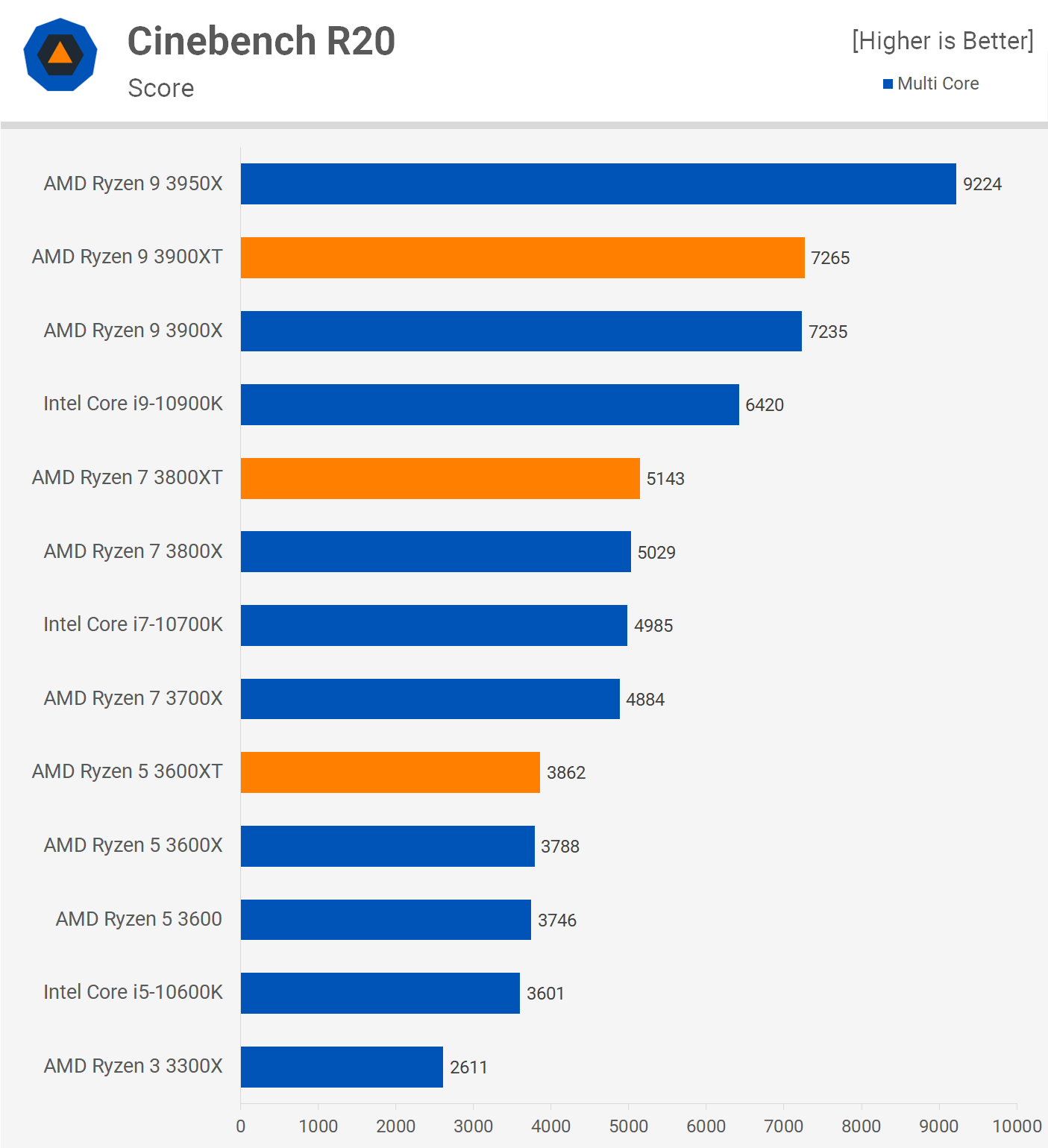
Looking at Cinebench R20 multi-core scores and given what we just saw with Blender, this looks to be about as good as the performance gains will get. We’re seeing a 2% increase for the 3600XT over the 3600X, 2% for the 3800XT, and almost half a percent for the 3900XT.
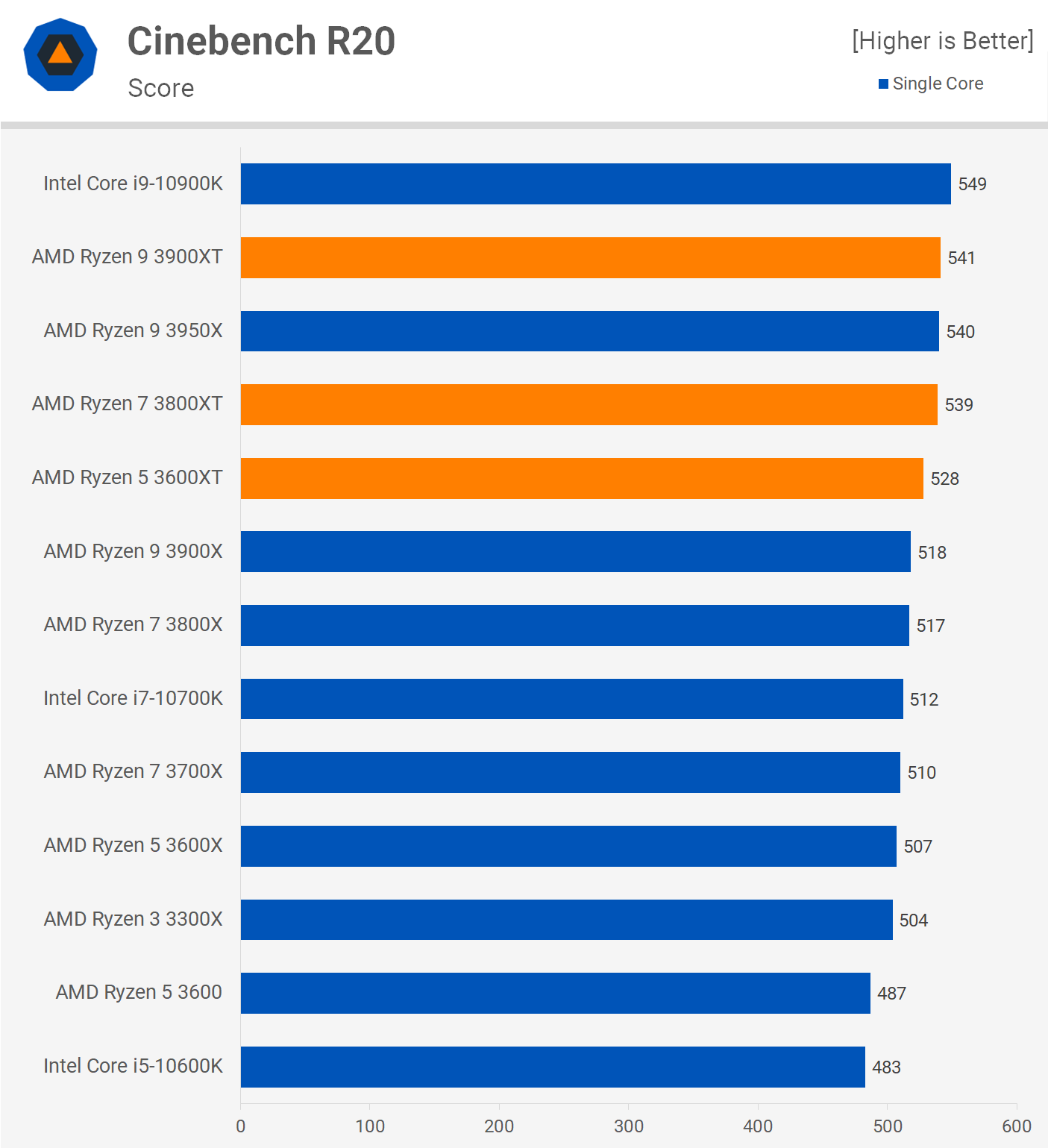
We see a 4% margin for the single core performance, just as AMD promised, so that’s good I guess. This will probably help them rank better in the UserBenchmark comparisons, but that’s about it.












Looking at power consumption, if you were hoping to see some 3950X-like efficiency improvements, these chips are extremely disappointing. They look like slightly overclocked versions of the original chips.
Gaming Benchmarks




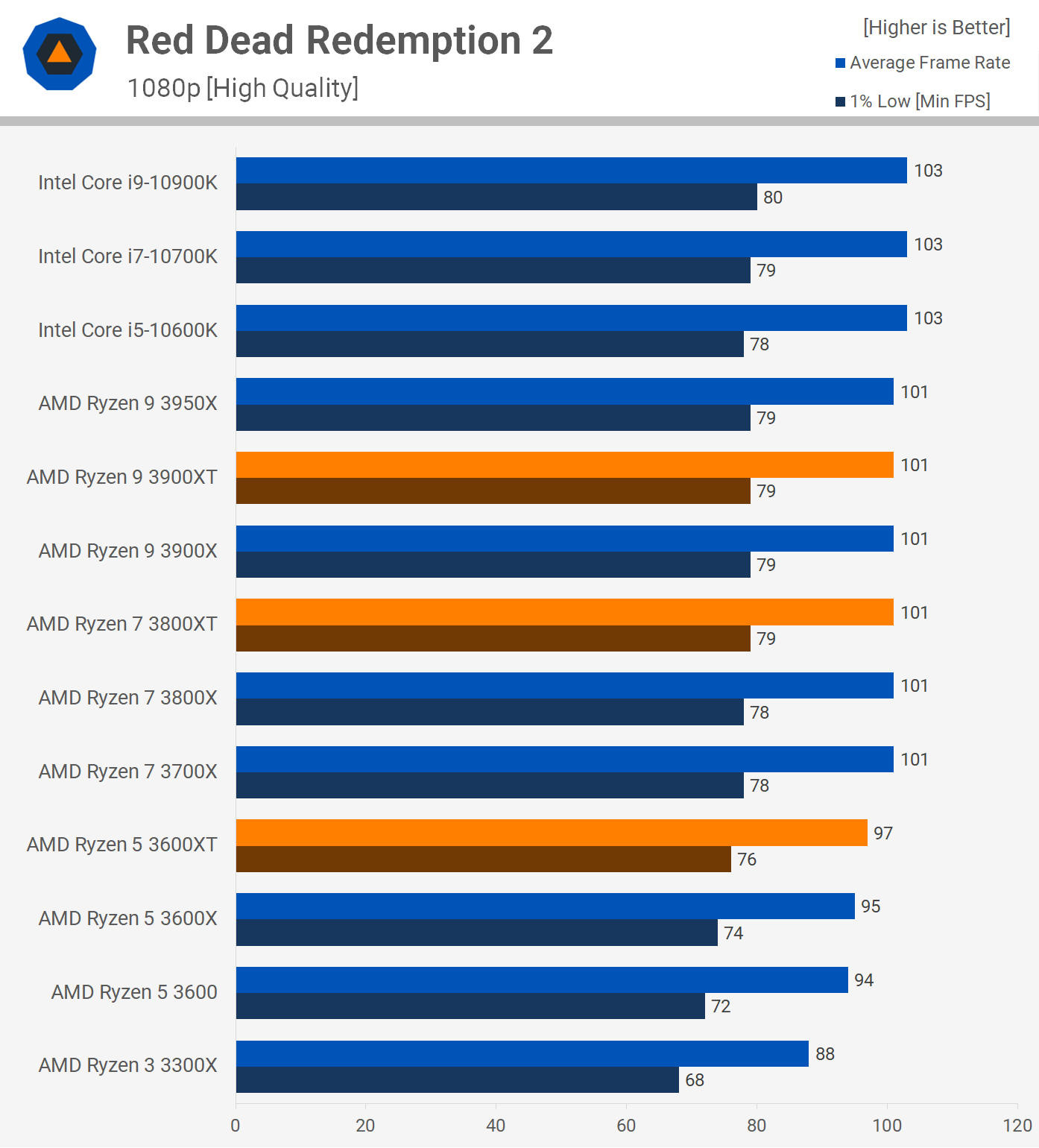

Overclocking
Time for some overclocking to see what this higher quality silicon can do. Through manual overclocking we’re again looking at 100 to 200 MHz more, at least when compared to our early production chips.

Interestingly, the 3900XT was the worst overclocker peaking at 4.4 GHz, but then it does have more cores so the chances of all 12 cores being capable of 4.5 GHz is more remote. It’s certainly possible though and we’re sure other reviewers may have gotten better chips. Ours maxed out at 4.4 GHz no matter how high we pushed the voltage, making it just 100 MHz better than our old 3800X.

The only problem with manually overclocking 3rd-gen Ryzen processors, at least using this method, is that you shave off some of the single core performance and there’s no escaping that fact, even with the new XT chips.
Cost per Frame
Taking a quick look at cost per frame using the 1% low data from our Battlefield V benchmark. When comparing the X variants to the XT models we see that the 3600 is 9% more expensive per frame, the 3800 is 16% and the 3900, 15% more costly.

However, if you care about value, we don’t recommend neither the 3600X nor the 3800X. Since day one we’ve recommended the vanilla 3600 and the 3700X. So if we compare the value of the XT range against the Ryzen CPUs you should actually be buying, things look much. We’re talking about a 36 – 39% increase in cost per frame when compared to the base models. Pretty brutal stuff in the value department.
What Just Happened?
That brings us to the end of one of the strangest CPU reviews we’ve written. It appears as though AMD decided to release three ‘new’ CPUs that offer nothing new and no one should consider buying them at launch prices. Perhaps mad overclockers who want to juice every last bit they can out of a 3rd-gen Ryzen processor? But even that’d be a stretch.
It’s our opinion that AMD is taking a page out of the Intel playbook and copying what they did with the Core i9-9900KS. We mean, they’re cashing in on improved yields, binning the better silicon, and selling it at a marked up price, while also removing the box cooler to maximize profit margins.
Personally I’m not a fan, but I don’t see an issue with this move as long as nothing changes with existing Ryzen processors. In the 9900K example, both parts later sold for more than the intended price range. So in AMD’s case, if they keep offering the original Ryzen 5, 7 and 9 parts below the MSRP, then we couldn’t care less about these XT versions.
We’re not going to delve deeper into possible motive, but you could say AMD is hoping to milk Zen 2 one last time before rolling out Zen 3 later this year — fingers crossed. On that note, given that we are expecting new CPUs soon, it doesn’t make sense to pay a premium for a Ryzen 3000 series CPU right now. If you need something like the 3900X or 3950X, and pricing is attractive, then by all means buy them, they’re amazing processors, but know you’re late in the product cycle.
Shopping Shortcuts:
Source link

